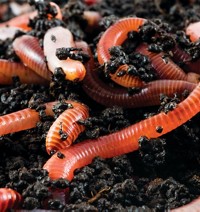Advertisement
Grab your lab coat. Let's get started
Welcome!
Welcome!
Create an account below to get 6 C&EN articles per month, receive newsletters and more - all free.
It seems this is your first time logging in online. Please enter the following information to continue.
As an ACS member you automatically get access to this site. All we need is few more details to create your reading experience.
Not you? Sign in with a different account.
Not you? Sign in with a different account.
ERROR 1
ERROR 1
ERROR 2
ERROR 2
ERROR 2
ERROR 2
ERROR 2
Password and Confirm password must match.
If you have an ACS member number, please enter it here so we can link this account to your membership. (optional)
ERROR 2
ACS values your privacy. By submitting your information, you are gaining access to C&EN and subscribing to our weekly newsletter. We use the information you provide to make your reading experience better, and we will never sell your data to third party members.
Environment
Sizing Up Our Food's Nitrogen Footprint
Agriculture: Researchers compare how the pollution behind a meal affects coastal ecosystems versus the climate
by Emily J. Gertz
August 5, 2010

When measuring our food's environmental impact, carbon isn't the only important element to consider. Calculating a food's "carbon footprint" can tell us how much climate-altering greenhouse gas we emit when growing and transporting it, but estimating the meal's associated nitrogen pollution accounts for the excess nutrients that create oxygen-depleted dead zones in our oceans.
Now two University of Pittsburgh researchers have analyzed the "nitrogen footprint" of different foods, and found that some products leave us with a trade-off between combating climate change and feeding dead zones (Environ. Sci. Technol., DOI: 10.1021/es9034478).
Marine dead zones form when nitrogen and phosphorus pollution concentrates in near-coast waters through a process called eutrophication. Bacteria consume most of the water's oxygen when they feast on the algal blooms attracted by these abundant nutrients. Drops in oxygen levels then suffocate other organisms or drive them away. The 8,000-sq-mile dead zone at the mouth of the Mississippi River in the Gulf of Mexico has disrupted the region's shrimp fishery for years.
To determine which foods contribute most to these harmful dead zones, Pittsburgh environmental scientists Xiaobo Xue and Amy Landis assessed the nitrogen output of different agricultural products during four lifecycle phases: farming, processing, packaging, and transportation. They then calculated the eutrophication potential of each food group and compared these farm-to-table nitrogen footprints to carbon footprints, using data from a well-known 2008 study (Environ. Sci. Technol., 2008, 42, 3508).
Red meat topped both footprint lists, making it the food with the greatest impact on both climate change and eutrophication: Eating a pound of beef creates about 22 lb of greenhouse gases and about 2.5 oz of nitrogen pollution. Cereals and carbohydrates had the smallest footprints, with each pound of food releasing only 3 lb of greenhouse gases and almost no nitrogen pollution.
But many foods had diverging impacts on the climate and coastal ecosystems. Dairy products landed at the bottom of the carbon footprint list with carbohydrates, but sat second only to beef in eutrophication potential, releasing 1.1 oz of nitrogen pollution for every pound of food produced.
And that dairy-produced nitrogen pollution adds up: According to U.S. Department of Agriculture statistics, the average U.S. American consumes 10-times as much dairy foods as beef each year, which translates into about 42 lb of nitrogen pollution per year compared to almost 9 lb released from beef. Meanwhile, people's annual dairy and beef consumption emits about the same amount of greenhouse gases.
The findings suggest that consumers, the food industry, and policymakers need to take more than climate change into account when trying to reduce food production's environmental impact, Landis says: "We showed that carbon footprints are not necessarily the best metric in evaluating the sustainability of a product."
The study "is a great start, and I love that people are thinking about this," says Mike Doan, a research associate with Friends of Casco Bay, a Maine environmental group that calls for sharp cuts in nitrogen pollution statewide. But to judge a food's full potential for eutrophication, he says, scientists will need a nitrogen footprint assessment that includes a food's resulting human waste, because treated sewage directly deposits excess nutrients into ecosystems.





Join the conversation
Contact the reporter
Submit a Letter to the Editor for publication
Engage with us on Twitter